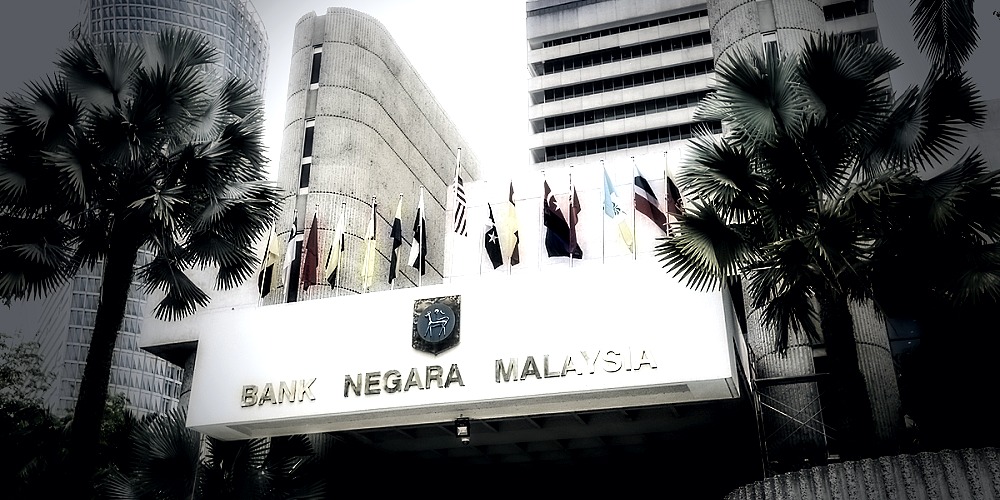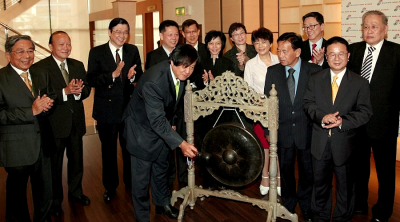Keeping the exchange rate stable is a big, big problem, as there are a host of factors that could affect a currency’s movement, including the country’s economic fundamentals, political stability, market demand for the currency, changes in the global politico-economic environment, continued rate hikes by the Federal Reserve, and competition from regional economies.
On Wednesday, the ringgit continued to slide against the dollar at 1 to 4.65 to a seven-month low, approaching the all-time record of 1 to 4.88 during the 1998 Asian financial crisis.
Before 1997, the ringgit had been hovering around the exchange rate of US$1 to RM2.50 until the regional financial crisis broke out and the ringgit plunged to a low of RM3.80 to the greenback, sparking a massive outflow of capital.
During the first half of 1998, the ringgit was traded between RM3.80 to RM4.40 to the dollar. Under the recommendation of then prime minister Tun Dr. Mahathir, Bank Negara announced the pegging of ringgit to the dollar at RM3.80, a policy that lasted for the following seven years.
Although Tun Mahathir’s pegging policy was different from the market bailout measures recommended by IMF to Thailand and South Korea at that time, at least it helped stabilize the ringgit exchange rate and avert a second financial crisis.
Compared to the ringgit’s exchange rate against the dollar prior to the regional financial crisis, no doubt the local unit’s value is almost halved today.
So, what should the more rational exchange rate of ringgit be? Unfortunately the government has kept mum over this thus far, saying instead it is utterly important to keep the ringgit exchange rate steady, without drawing a baseline for the local currency’s value.
However, if a baseline is set, the ringgit could come under assault again by international speculators, and the country’s under US$110 billion foreign reserves today will never be enough to withstand the manipulation by international currency speculators.
As such, it appears that the only thing the government can do at this juncture is not to intervene or peg the ringgit but allow it to float freely.
What most people know about the three major functions of a currency are: for trading, quotation and hedging. We all know very well about the first two, while currency as a hedging tool has very much to do with the fluctuation of its exchange rate. A holder will choose to buy or sell a currency depending on its anticipated fluctuation.

Speculators tend to sell the ringgit for the US dollars for fear their assets will shrink over time, and the dollar will appreciate as a result of escalating demand. Meanwhile, the ringgit will only trend lower due to oversell and be plunged into a vicious cycle of long-term devaluation.
Deputy finance minister Ahmad Maslan admitted that weak market demand for ringgit is the primary cause for the local unit’s depreciation. As such, he proposed to promote the country’s tourist industry in a bid to boost the ringgit’s demand by tourists.
Nevertheless, the demand created this way will not remarkably strengthen the ringgit’s value. Moreover, our tourist industry lacks competitiveness compared to Thailand, Indonesia and Vietnam.
Is an under-performing ringgit a boon or a bane to the national economy? Well, we cannot generalize, and it all depends on how the government is going to deal with it.
Ahmad Maslan said the ringgit exchange rate should be kept stable and not fluctuating wildly. He also said a lower ringgit will boost export competitiveness (which is not absolutely true) while making imports costlier, forcing locals to go for domestic products instead.
The deputy minister also said a lower ringgit augurs well for the country’s tourist industry, as more foreigners will flock into the country while Malaysians spend their money here instead of going on vacation abroad.
Unfortunately, his views could not rationalize the fall of the ringgit which is now alarmingly close to the record low psychological level.
In the meantime, the prime minister proposed three major measures on Monday: to lower share transaction stamp duty fee, promote investment and encourage local businesses to go for listing.
Such measures, including the expansion of public infrastructure development to attract the participation of private companies, are long-term plans that are not going to produce any visible results in near term.
The PM said the country had attracted RM230 billion of foreign investments so far this year, which should encourage more investment inflow. But the thing is, the country’s political turmoil has been a major push factor for foreign investors.
If the unity government performs poorly in the six state elections in August, there will be little hope for a major economic turnaround thereafter, and we can’t expect the ringgit to recover, or foreign capital to flood in.
The new Bank Negara governor Abdul Rasheed Ghaffour will take over the baton from Nor Shamsiah Mohd Yunus next month. PM Anwar seems to have a lot of faith in the new central bank governor, believing that he will stand up to the challenges and take the country to new heights. And let’s pray that he will help stabilize the ringgit exchange rate.
Keeping the exchange rate stable is a big, big problem, as there are a host of factors that could affect a currency’s movement, including the country’s economic fundamentals, political stability, market demand for the currency, changes in the global politico-economic environment, continued rate hikes by the Federal Reserve, and competition from regional economies.
It is our hope that the PM, finance ministry, economy ministry and Bank Negara will come up with substantial solutions to check the downward spiral of the ringgit.
ADVERTISEMENT
ADVERTISEMENT


































